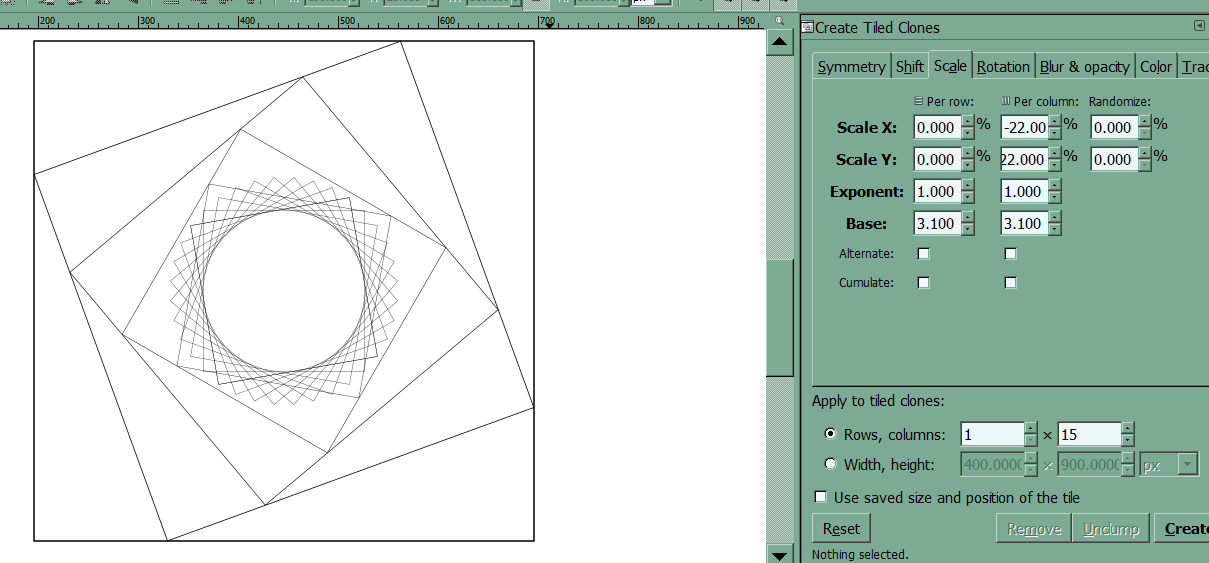Has anyone confirmed that the bug has been reported? After all, it can't get fixed if developers don't know about it.
If you have found the bug report, please post a link here, so other people can benefit. If you can't find it, please make a new bug report.
What is the bug, in this case? Is it something about the specific Symmetry that you were trying to use, in Tiled Clones dialog? Or is it about having only percent as available units?
I never did actually try the solution I proposed in my first reply. But I thought the problem was using the wrong scale amount. Trying now....
Actually, on re-reading this thread, I'm not clear what your goal is. The image in your first message is different from the one where you tried Interpolate Sub-Paths. Yes, they are similar in appearance, but mathematically different...or different vectors.
Ok, so here's the result using my calculations from Reply #2.

 stc.png
stc.png
(22.08 kB . 544x530)
(viewed 489 times)So you can see that it does a great job for the first square. But the others are off. And not only off, but they are off by a little bit more each time. So that implies to me, that maybe we need to use an Exponent value....which I never have done before. But let's see if I can do it by trial and error.
(I don't know why the stroke width is also being scaled, because I have that disabled on the Selection tool control bar. Is there some other option for tiled clones? Or should we just use fills without strokes. And then afterwards, remove the fill and add stroke??)
No, exponent is not the answer, because the exponent value affects all of the clones. So let's say I use 0.9 for the exponent value. The first smaller square becomes larger than the original, and all the rest of the clones are still not close to touching each other.
I notice (the first time I noticed this, actually) there is another option on the Scale tab, called Base. According to the tool tip, it's for a logarithmic spiral. The word "spiral" leads me to think that might be exactly what is needed. But all I can do is trial and error....
Oh look, 3.1 for the Base value is very close! Still not quite right though, because as they get smaller, they don't touch the edges anymore. But if I try 3.0, then the first smaller clone is too large, and with 3.2, it doesn't quite touch (too small).

 stc1.png
stc1.png
(77.91 kB . 1209x563)
(viewed 517 times)Will have to toss this off to someone with better math skills than me. It seems that what you are trying to do is not so easy.
And I will repeat my sentiment, that in the time it takes to use Tiled Clones dialog by trial and error, I could have used Duplicate - Scale - Rotate - Snap, and finished the drawing a few times over!
 This is a read-only archive of the inkscapecommunity.com site. You can search for info here or post new questions and comments at inkscape.org/forums
This is a read-only archive of the inkscapecommunity.com site. You can search for info here or post new questions and comments at inkscape.org/forums  This is a read-only archive of the forum.inkscapecommunity.com site. This feature is no longer available.
This is a read-only archive of the forum.inkscapecommunity.com site. This feature is no longer available. 